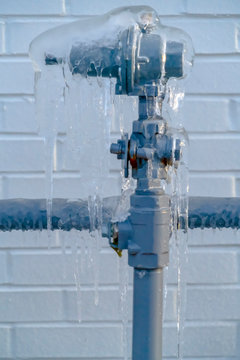Protect Against Frozen Pipes in Winter: Professional Advice
Protect Against Frozen Pipes in Winter: Professional Advice
Blog Article
Were you looking for help concerning Prevent Frozen Pipes ?

Winter can wreak havoc on your pipes, specifically by freezing pipelines. Below's just how to avoid it from occurring and what to do if it does.
Intro
As temperatures decline, the threat of frozen pipelines boosts, possibly resulting in pricey repair work and water damages. Understanding how to avoid icy pipelines is crucial for homeowners in cool environments.
Recognizing Frozen Pipes
What triggers pipelines to ice up?
Pipelines ice up when exposed to temperatures listed below 32 ° F (0 ° C) for expanded periods. As water inside the pipelines ices up, it expands, taxing the pipe walls and possibly creating them to rupture.
Risks and damages
Icy pipelines can cause water interruptions, home damage, and costly repair work. Burst pipes can flood homes and trigger comprehensive structural damages.
Indications of Frozen Pipes
Identifying frozen pipelines early can avoid them from breaking.
Exactly how to identify frozen pipes
Seek reduced water flow from taps, uncommon odors or noises from pipelines, and visible frost on exposed pipelines.
Avoidance Tips
Shielding vulnerable pipes
Wrap pipelines in insulation sleeves or use warm tape to safeguard them from freezing temperatures. Focus on pipelines in unheated or exterior locations of the home.
Home heating methods
Maintain indoor spaces adequately heated up, specifically areas with plumbing. Open up closet doors to permit warm air to flow around pipelines under sinks.
Protecting Outdoor Pipes
Yard pipes and outdoor taps
Detach and drain yard pipes prior to winter months. Mount frost-proof spigots or cover outdoor faucets with shielded caps.
What to Do If Your Pipes Freeze
Immediate activities to take
If you believe icy pipelines, keep faucets open up to soothe stress as the ice thaws. Make use of a hairdryer or towels taken in warm water to thaw pipes slowly.
Long-Term Solutions
Architectural modifications
Take into consideration rerouting pipes far from exterior wall surfaces or unheated areas. Add added insulation to attics, cellars, and crawl spaces.
Upgrading insulation
Buy top quality insulation for pipelines, attics, and wall surfaces. Appropriate insulation helps preserve constant temperatures and decreases the risk of icy pipelines.
Final thought
Avoiding icy pipes requires positive procedures and fast responses. By recognizing the causes, signs, and preventive measures, property owners can safeguard their plumbing during winter.
5 Ways to Prevent Frozen Pipes
Drain Outdoor Faucets and Disconnect Hoses
First, close the shut-off valve that controls the flow of water in the pipe to your outdoor faucet. Then, head outside to disconnect and drain your hose and open the outdoor faucet to allow the water to completely drain out of the line. Turn off the faucet when done. Finally, head back to the shut-off valve and drain the remaining water inside the pipe into a bucket or container. Additionally, if you have a home irrigation system, you should consider hiring an expert to clear the system of water each year.
Insulate Pipes
One of the best and most cost-effective methods for preventing frozen water pipes is to wrap your pipes with insulation. This is especially important for areas in your home that aren’t exposed to heat, such as an attic. We suggest using foam sleeves, which can typically be found at your local hardware store.
Keep Heat Running at 65
Your pipes are located inside your walls, and the temperature there is much colder than the rest of the house. To prevent your pipes from freezing, The Insurance Information Institute suggests that you keep your home heated to at least 65 degrees, even when traveling. You may want to invest in smart devices that can keep an eye on the temperature in your home while you’re away.
Leave Water Dripping
Moving water — even a small trickle — can prevent ice from forming inside your pipes. When freezing temps are imminent, start a drip of water from all faucets that serve exposed pipes. Leaving a few faucets running will also help relieve pressure inside the pipes and help prevent a rupture if the water inside freezes.
Open Cupboard Doors
Warm your kitchen and bathroom pipes by opening cupboards and vanities. You should also leave your interior doors ajar to help warm air circulate evenly throughout your home.

I was made aware of that write-up on Winter Plumbing Precautions: Preventing Frozen Pipes through a buddy on another blog. Please pause to distribute this blog posting if you liked it. I am grateful for your time. Come back soon.
Call Today Report this page